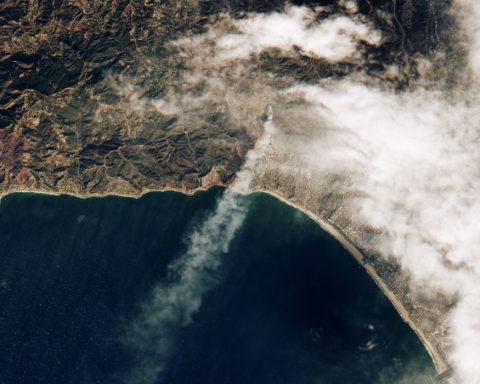Norway’s oil is running out and the country has never been in better shape. Alberta, blessed with reserves second only to Saudi Arabia’s, is drowning in oil but is in a financial mess even though oil prices are high. How can this be?
Alberta is not cursed; it was just greedy and decided that a drunken, blow-out dance party today was better than a string of candle-lit dinner parties down the road. Norway took the opposite approach, at the risk of being boring. It decided that saving for the future would keep the good times rolling through good economic times and bad.
Norway’s approach looks like the winning strategy. The country has one of the few triple-A credit ratings left on the planet. Its economy is expected to grow 2 per cent this year, when most of Europe is in recession, and it is running a budget surplus of 12.5 per cent of gross domestic product – a figure that looks like a misprint given the horrendous deficits elsewhere. Its sovereign wealth fund, at last count, was valued at $664 billion, making it the biggest of its kind in the world. It’s expected to reach $1 trillion within this decade.
And Alberta, the low-tax utopia and allegedly unstoppable wealth-creation machine? Its economy is still expanding, but it ran a shockingly high budget deficit of $3.9 billion in the 2012-13 fiscal year, more than four times greater than the province had estimated. Its sovereign wealth fund – the Alberta Heritage Savings Trust Fund – has only $14.8 billion in the kitty. That’s getting close to where it was at in 1987. Given that Norway’s population is only about one million more than Alberta’s, and that Alberta’s oil output (if not natural gas output) is expanding, the deficit and Heritage Fund figures are embarrassing.
Alberta is blaming the “bitumen bubble,” a catchy, if somewhat misleading, term apparently designed to cast the blame on factors beyond the provincial government’s control. It refers to the gaping spread between Alberta crude and the benchmark Brent (North Sea) and West Texas Intermediate (WTI) prices as pipeline capacity constraints keep the Alberta product from reaching potential customers. This year, Western Canada Select has been between $20 and $30 a barrel below the WTI price.
The term is misleading because low prices for Alberta crude explain only part of the problem. Alberta is as much a natural gas as an oil pumper, and natural gas prices and exports to the United States have been plummeting, thanks to the American shale gas bonanza.
Alberta might not have been in this trap if it had borrowed a few tips from Norway. Norway’s approach to energy development is the polar opposite of Alberta’s. Norway does not slap royalties on its North Sea production; it taxes the production profits at a 78 per cent marginal rate. And all the tax revenue collected is funnelled into the country’s sovereign wealth fund that pays out 4 per cent a year to fund current spending on public services.
As part of a mandate to invest ethically, a good deal of the income is invested in clean energy and other environmental initiatives. The fund has invested $3.1 billion in clean technology companies in emerging economies, such as China and India, and has been a large investor in World Bank Green Bonds. Domestically, offshore wind farm developments are receiving much-needed capital, while companies focused on energy efficiency, water technology, waste management, carbon capture and storage, and pollution reduction have become a target of investment. Good things to fall back on when the oil stops flowing.
Alberta uses a combination of royalties and taxes to earn resources income. Both rates are low and should be higher (at one point, the royalty rate on new oil sands developments was close to zero). It then puts piddling amounts in the Heritage Fund, or nothing at all in some years, even though Alberta has until now been debt free and theoretically could have filled it up.
Before he died in 2012, Peter Lougheed, the former Alberta premier who launched the Heritage Fund in the mid-1970s, said the fund would now be worth $100 billion if his original fund contributions plan had been kept intact. Writing in the Calgary Herald newspaper, Lougheed said that “when a real resources revenue disaster strikes, Albertans will not have the fund as a shield.” Nor will it have invested in any significant way in a future beyond oil.
There are some crucial geological reasons why the Alberta and Norway energy development systems differ so greatly. In the North Sea, the reserves tend to be in isolated fields with high discovery and development costs. Norway’s goal is to keep these fields alive and, if possible, expanding, hence the peculiar government revenue structure. But, at the same time, 78 per cent of the capital deployed on the North Sea projects is refunded, greatly reducing the operators’ risks. In Alberta, the risks are low because the location and size of the oils sands are no secret. The Alberta government’s goal is to maximize drilling and pumping activity through fairly low tax and royalties.
Alberta’s mistake, other than not imposing higher royalty rates, was treating the Heritage Fund as an afterthought. Lougheed was right – the fund’s value is so low that the province has little financial cushion. Disaster has not hit, but there is no doubt that Alberta’s finances will be strained as the United States uses its own shale gas and oil reserves to emerge as an energy superpower.
Norway faces problems, too. The North Sea is in a slow-motion suicide (though oil prices have held up better than natural gas prices, and the North Sea is mostly about oil). But its wealth fund is so enormous, and so well invested in equities, bonds and property around the world, that it has a cushion that Lougheed could only have dreamt about. The investments are also helping Norway transition to a low-carbon future as its own oil bounty declines – a more balanced path by any measure.
As well as protecting it from potentially murderous cyclical economic swings, the Norwegian system gives the country a financial discipline that Alberta lacks, since all of its energy revenues go into its wealth fund. The fund cannot be starved or raided by governments to finance cyclical spending binges.
Prices for Alberta crude will eventually recover. When they do, the province should fatten up the Heritage Fund. Will it happen? Don’t count on it.
In its 2013 budget, released on March 7, the government of Premier Alison Redford announced it will run a deficit in its 2013-14 fiscal year as well, to the tune of about $2 billion. But it also said that in 2015-16 it will stop spending revenue generated through its Heritage Fund. It plans to reinvest it instead.
Don’t count on that, either. The cowboy province has never been big on delayed gratification.







